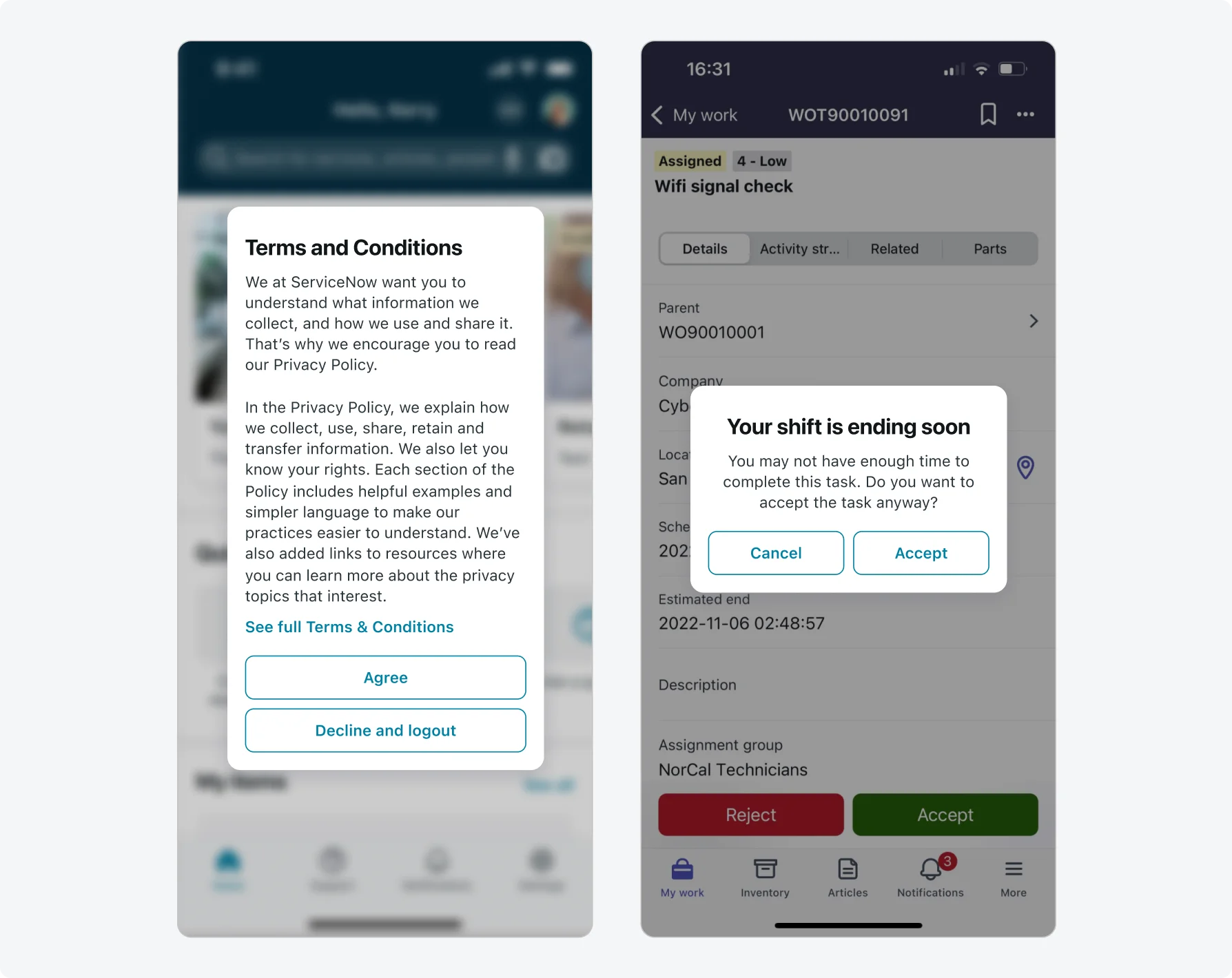Overview
A mobile pop-up is a window that appears on top of the main content in a user interface. Pop-ups can serve various purposes, such as to relay information to the user and to provide conditional “call to action” messages. Pop-ups are flexible and customizable in terms of their content and design, and can be triggered either when a user logs in to an area or after a button tap.
Use cases for using mobile pop-ups
- Disclaimer acknowledgment: Pop-ups may be used to ensure that users acknowledge and accept disclaimers or warnings. For example, presenting end-users with Terms and Conditions and requesting their consent.
- Time-sensitive information: Pop-ups can display time-sensitive information, like a flash sale notifications or event reminders. For example, information about campaigns, company news and announcements, “What’s new” on their application, or information about the site they are currently visiting.
- Actions Confirmations: Pop-ups may be used to handle cases where the user might need to confirm an action if a specific condition is met. For example, display a pop-up to a user stating that they have accepted a new task with an estimated 3 hours of work, but their work shift is due to end in an hour.



